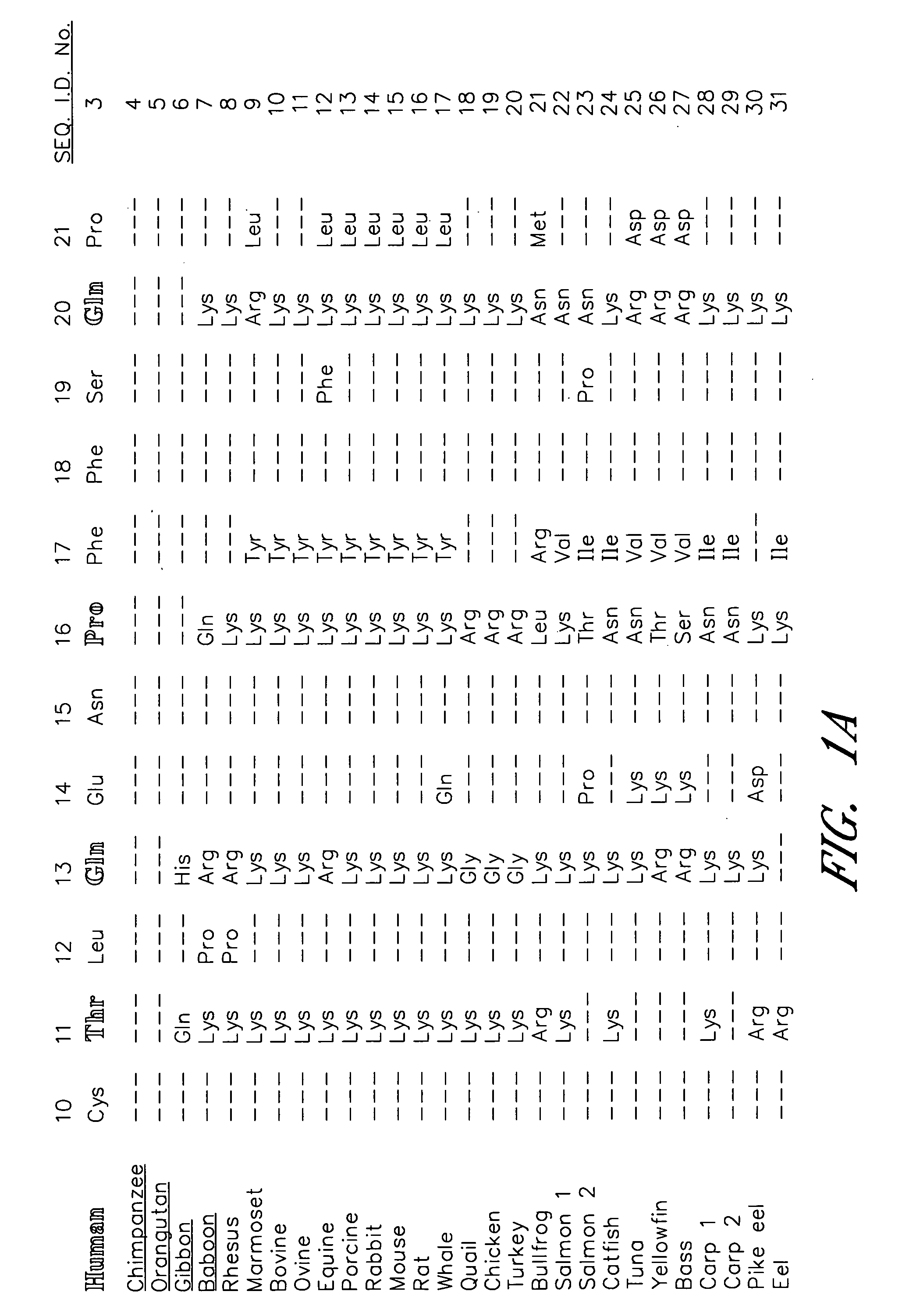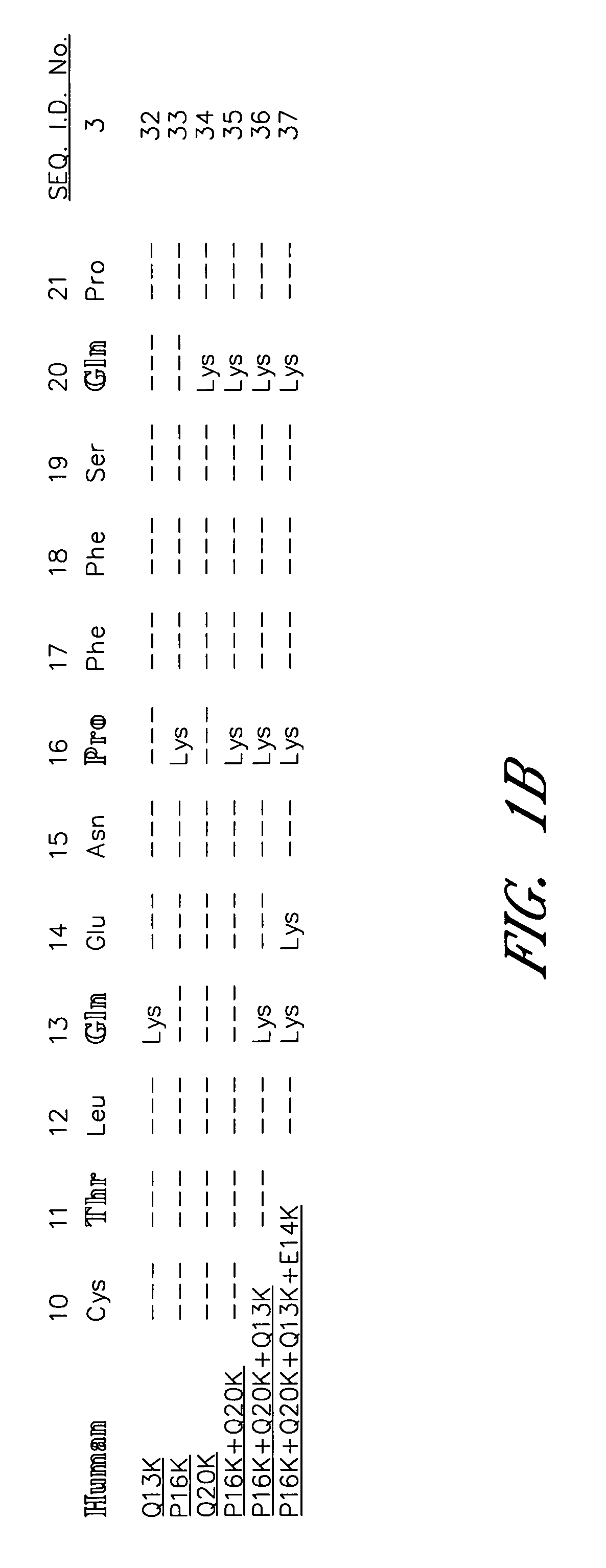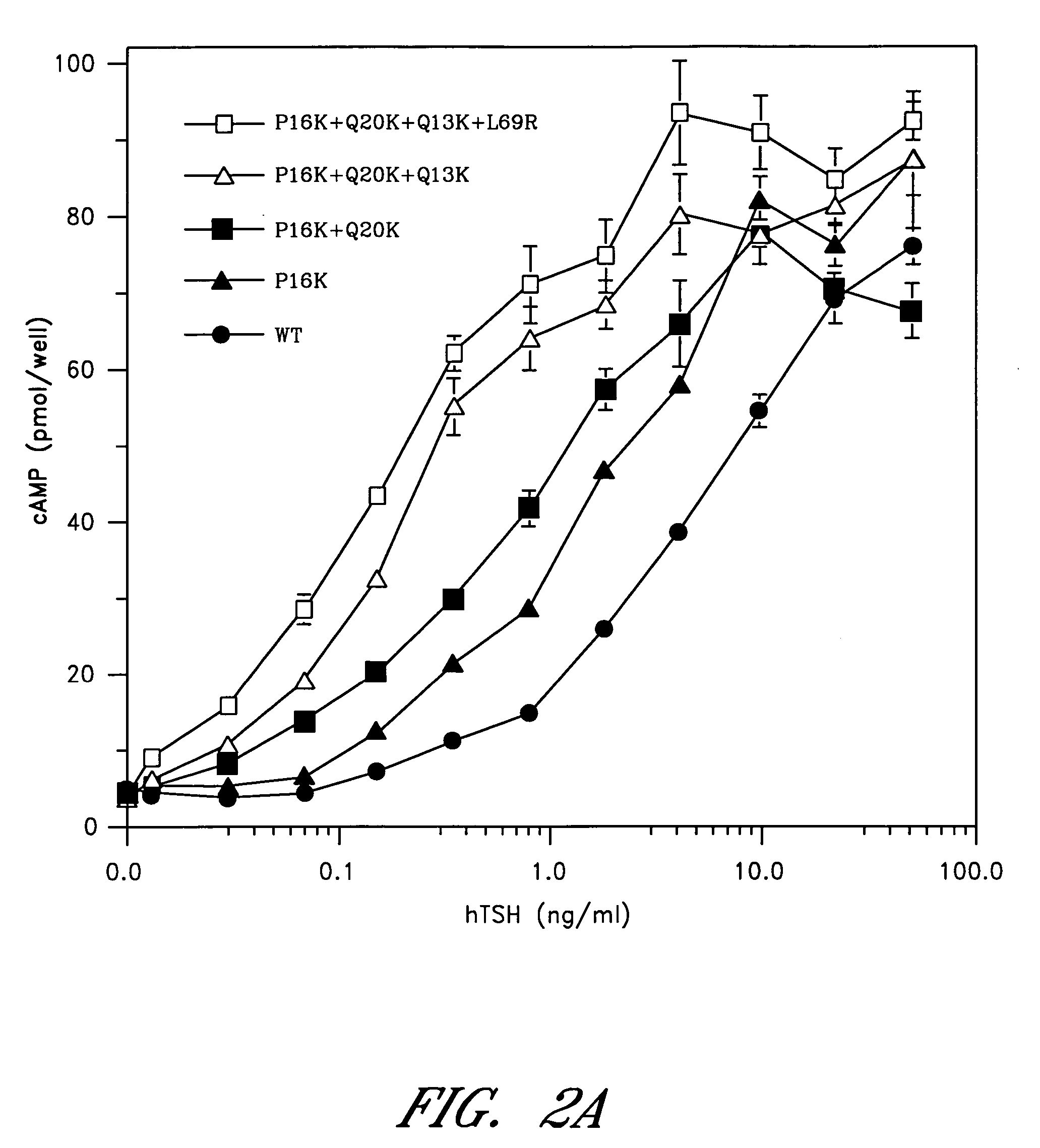Glycoprotein hormone superagonists
a glycoprotein and superagonist technology, applied in the field of modified glycoprotein hormones, can solve the problems of relatively high possibility of anaphylactic shock and limited approach
- Summary
- Abstract
- Description
- Claims
- Application Information
AI Technical Summary
Benefits of technology
Problems solved by technology
Method used
Image
Examples
examples
[0078] The sequence between Cys10 and Pro21 of the human α-subunit was selected as the primary target for mutagenesis (FIG. 1). hCG-based homology modeling suggested that this region of the α-subunit is distant from the β-subunit in all glycoprotein hormones, contains several surface-exposed residues and includes a single turn of a 310-helix between Pro16 and Ser19 (Wu, H. et al. 1994 Structure 2:545-558). The human α-subunit differs from bovine in position 11, 13, 16, 17 and 20 (FIG. 1a) and four of these changes are nonconservative (Thr11→I Lys, Gln13→Lys, Pro16→Lys and Gln20→Lys). We used PCR amplification to determine the sequence of the 11-20 region in the α-subunit of several primates including higher apes (common chimpanzee—Pan troglodytes, orangutan—Pongo pygmaeus), lesser apes (gibbon—Hylobates sp.), Old World monkey (baboon—Papio anubis) and compare them with previously known mammalian sequences including rhesus macaque (Macaca mulatta; Old World monkey), common marmoset (...
PUM
| Property | Measurement | Unit |
|---|---|---|
| time | aaaaa | aaaaa |
| nucleic acid | aaaaa | aaaaa |
| frequency | aaaaa | aaaaa |
Abstract
Description
Claims
Application Information
 Login to View More
Login to View More - R&D
- Intellectual Property
- Life Sciences
- Materials
- Tech Scout
- Unparalleled Data Quality
- Higher Quality Content
- 60% Fewer Hallucinations
Browse by: Latest US Patents, China's latest patents, Technical Efficacy Thesaurus, Application Domain, Technology Topic, Popular Technical Reports.
© 2025 PatSnap. All rights reserved.Legal|Privacy policy|Modern Slavery Act Transparency Statement|Sitemap|About US| Contact US: help@patsnap.com



